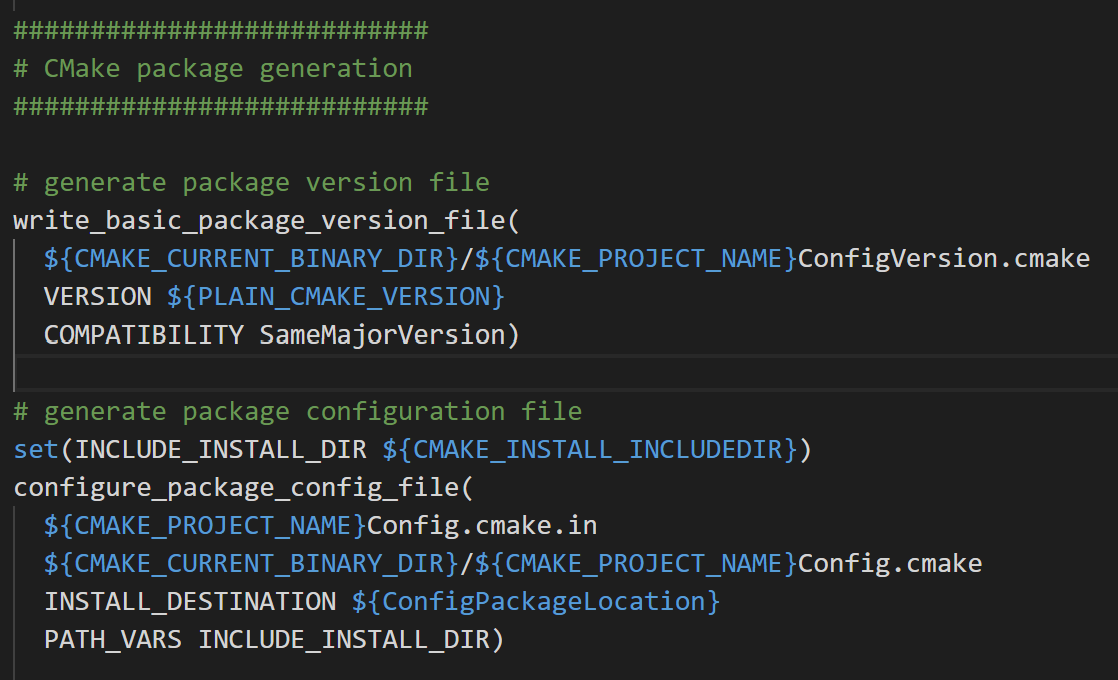

- #CMAKE TUTORIAL .EXE#
- #CMAKE TUTORIAL INSTALL#
- #CMAKE TUTORIAL FULL#
- #CMAKE TUTORIAL SOFTWARE#
- #CMAKE TUTORIAL CODE#
#CMAKE TUTORIAL .EXE#
exe file should now be compiled and ready to run. Windows Also Scoop is generally up to date.
#CMAKE TUTORIAL INSTALL#
Feel free to install CMake yourself, it's 1- 2 lines and there's nothing 'special' about the built in version. The project can then be built through the IDE. CMake Default Versions Here are some common build environments and the CMake version you'll find on them. This will open the default IDE or some other configured environment to open your project. This tutorial, and projects in this class, will just use the default settings that display no need to change anything.Ĭlick open project. For example: cmake -G 'Your Generator' -D CMAKECCOMPILERgcc-4.2 -D CMAKECXXCOMPILERg++-4.
#CMAKE TUTORIAL FULL#
The red highlights will display the optional cmake flags that are listed in the CMakeLists.txt (optional files to build), the configuration types, and CMAKE_INSTALL_PREFIX, where the default final. Method 2: use cmake -D Set the appropriate CMAKEFOOCOMPILER variable (s) to a valid compiler name or full path on the command-line using cmake -D. Here, MSVC 2017 will be used, which will generate project files for Visual Studios. You can customize the preferred compiler depending on the computer and program files, there may be 圆4 alternative compilers listed as well. This will read the CMakeLists.txt files, and configure the project for the correct compiler. The build folder will also include our executable files once built, so remember where this is! Locate the corresponding folders for the project: The source directory should be the one corresponding to the git directory pulled (make sure that the source directory contains a CMakeLists.txt file!) The build folder, if not already created, can be added by you it acts as a way of separating the binary files compiled from the source code).
#CMAKE TUTORIAL CODE#
There are two paths that are required for cmake to configure and generate projects, the source code directory and build directory. The following window should display upon opening CMake-gui. If one chooses, some alternatives can include MinGW or Cygwin in this tutorial instead, one recommended method of building assignments will be through the cmake-gui: CMake-gui Download, and using Visual Studios 2017, installed with Visual C++ Support. Queue.For Windows, cmake and make compatibilities especially can be more involved, as gcc and such compilers do not come packaged with the OS. The add_executable directive tells CMake which source files to use to build the simple application.Īn example simple.cpp that works with the above CMakeLists.txt is: #include The IntelDPCPP module sets the compiler and linker flags required to build a project with DPC++. IntelDPCPP is in CMake's search path after running setvars.sh on Linux or setvars.bat on Windows. The find_package directive, tells CMake to use the IntelDPCPP module distributed with the oneAPI distribution. Projects that also use C, Fortran, or other languages can list the languages used them in the LANGUAGES parameter.Īpplications not using pre-compiled header files might work with CMake 3.21.0 on Windows.

The project CMake directive tells CMake the name of this project and that it uses C++. For Windows the minimum required version is 3.23.0. The minimum required CMake version for Linux is 3.20.5. # CMake 3.20.5 is the minimum recommended for IntelLLVM on Linux CMake Tutorial C++Now 2017: Daniel Pfeifer Effective CMake.
#CMAKE TUTORIAL SOFTWARE#
# need at least CMake 3.23 for IntelLLVM support of IntelDPCPP package on Windows In software development, CMake is cross-platform free and open-source software for build. The following CMakeLists.txt builds the DPC++ application in simple.cpp for either Windows or Linux with the minimum supported CMake version for each platform. Refer to the package for more information.ĬMake is supported on the Windows and Linux command line. The heterogeneous compilation configuration package exposes other variables that may be required.Run CMake and build your applications as normal.See the Linux and Windows sections above for specific settings.


Add the following snippets to your project’s CMakeLists.txt:.Use the following steps to enable the compiler for your project:


 0 kommentar(er)
0 kommentar(er)
